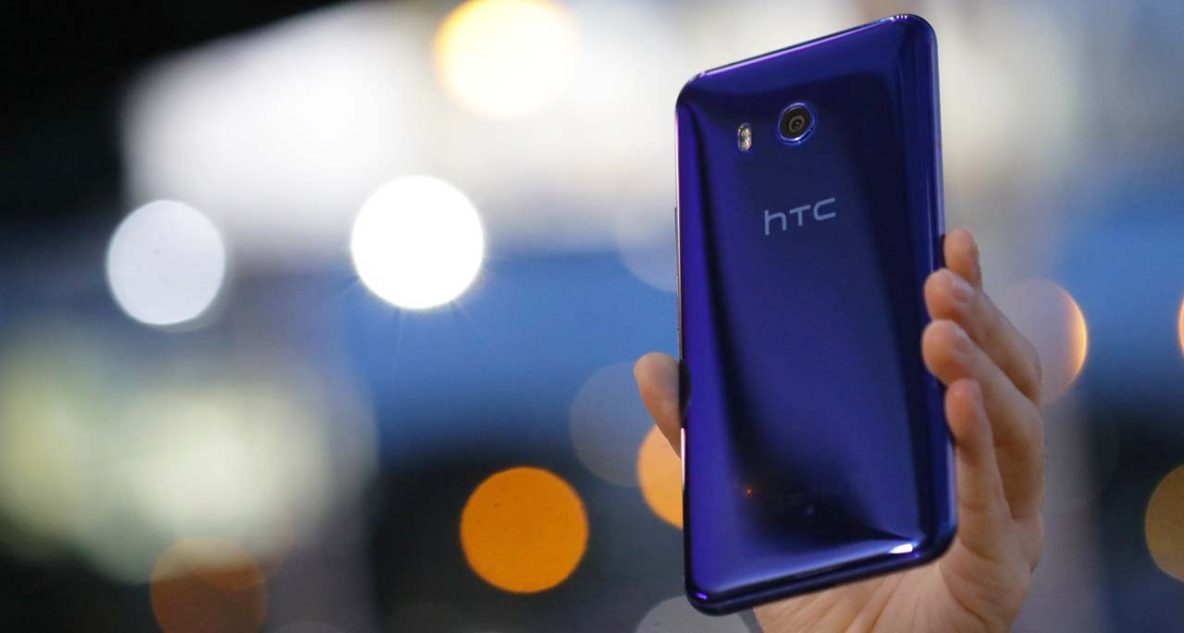Our first-ever Android phone (which was also the first to proudly carry the Google branding) was the HTC-made Google Nexus One. We loved that pudgy slab of metal and glass with a trackball so much that we refused to part ways with it — even after all these years. It still works, too, dings and scratches and all. That tells us this piece of hardware will survive a nuclear apocalypse and eventually outlive us all.
The HTC-made Google Nexus One, our first Android phone
The HTC Legend, the HTC Sensation, the laughably named HTC ChaCha, the HTC One M7 and its successor, the One M8 — we had them at one point, to our delight. All those times, we rarely purchased handsets for personal use but made exceptions in favor of the Taiwanese electronics maker. When HTC shuttered operations in the Philippines and left for greener pastures years ago, it left a hole in our collective hearts, which rivals were all too happy to fill.
The August 4 #RevuLive episode where we talked about all the phones HTC brought to the Philippines (jump to 17:30)
But for HTC, the hiatus wasn’t the end; it had simply been rethinking its strategy, constantly looking for windows to open, for cracks to show, before punching its ticket back to a more-competitive-than-ever domestic market. Just last month, HTC completed its return to the Philippines, armed with the best intentions — and some of the best smartphones the company has ever produced.
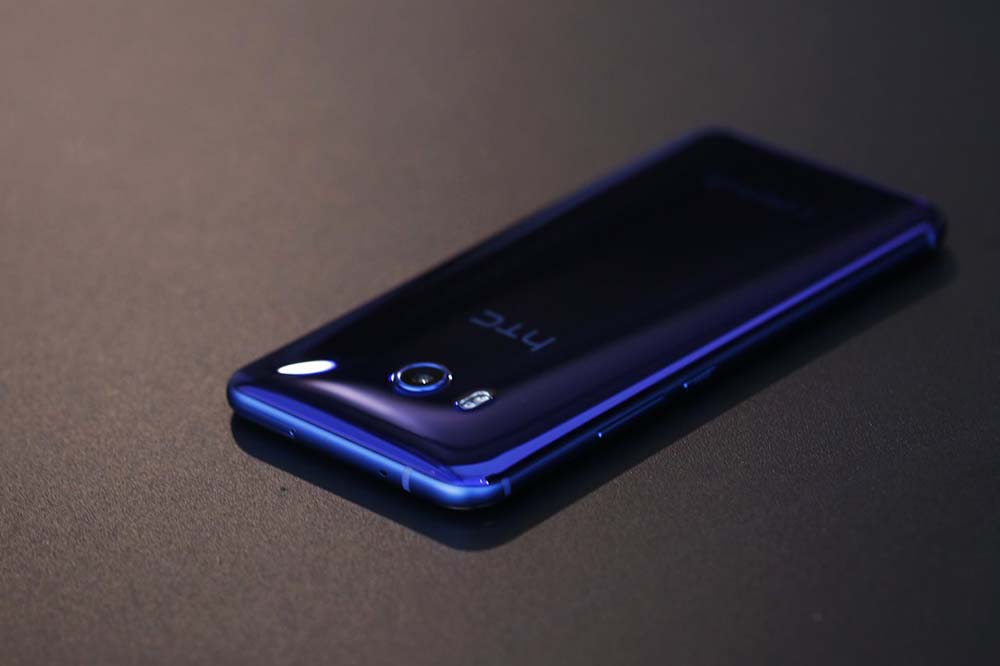
Fronting HTC’s comeback efforts in the Philippines is the HTC U11, which is priced at P36,990 (for the top-performing variant with 6GB RAM and 128GB ROM).
And fronting its comeback efforts is the HTC U11, which is priced at P36,990 or about $723 in the Philippines (for the top-performing variant with 6GB RAM and 128GB ROM). Which is kind of serendipitous, because no other phone in its arsenal, current or otherwise, is more equipped to excite and impress and reintroduce the brand to a new audience than its latest flagship.
SEE ALSO: Complete specs of the HTC U11
Granted, it isn’t as flashy on the surface as the Samsung Galaxy S8 and other bezel-less phones from competing brands, but we rate the HTC U11 as one of the best in its class, all things considered. As a camera phone, this one is unprecedented– easily better than any other we’ve tested. It can’t be beaten; nothing we’ve used extensively so far could possibly dethrone it.
As a camera phone, the HTC U11 is unprecedented — easily better than any other we’ve tested. It can’t be beaten; nothing we’ve used extensively so far could possibly dethrone it.
Looking at the face of the device, the U11 doesn’t come across as anything spectacular. The front is plain and almost suggests it isn’t meant to be ogled when the display is off. There’s no double-barreled camera system, no iris scanner, and no secondary LCD above the main screen either. Even the side bezels are a few millimeters wide.
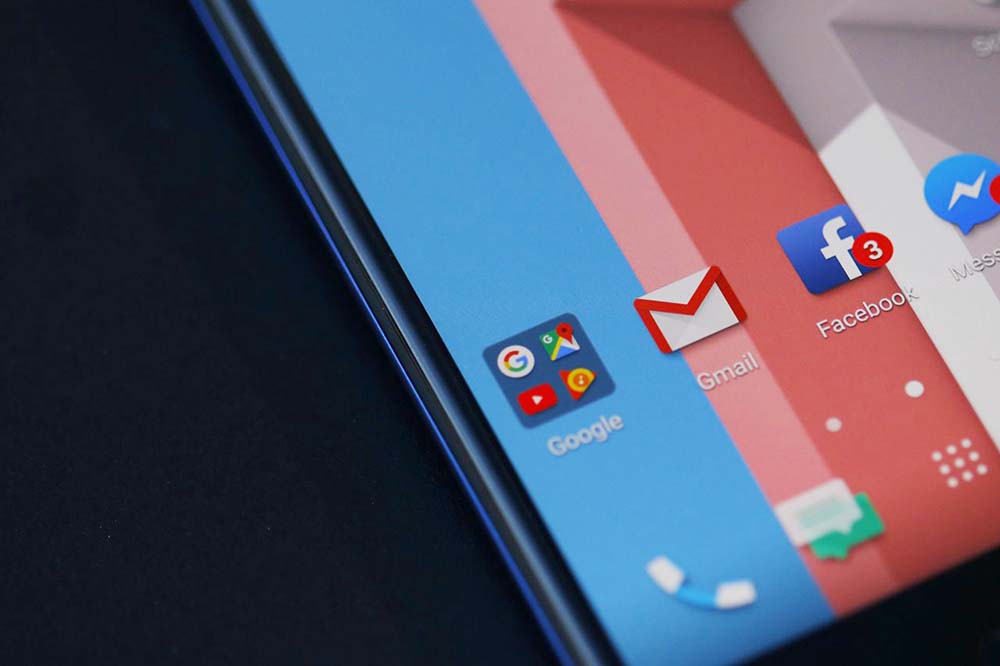
The HTC U11’s side bezels are a few millimeters wide.
What you get is piece of glass that rolls into the aluminum frame for a smooth and delightful feel and covers the full extent of the front, including the 5.5-inch LCD display. A fingerprint reader that doubles as a capacitive home key rests below the panel, flanked by two brightly lit keys on opposite sides of the bottom bezel.
We found the sensor to be accurate; there weren’t many instances where the hardware didn’t read a fingerprint correctly. It’s also fast as heck, making unlocking the phone painless and quick.
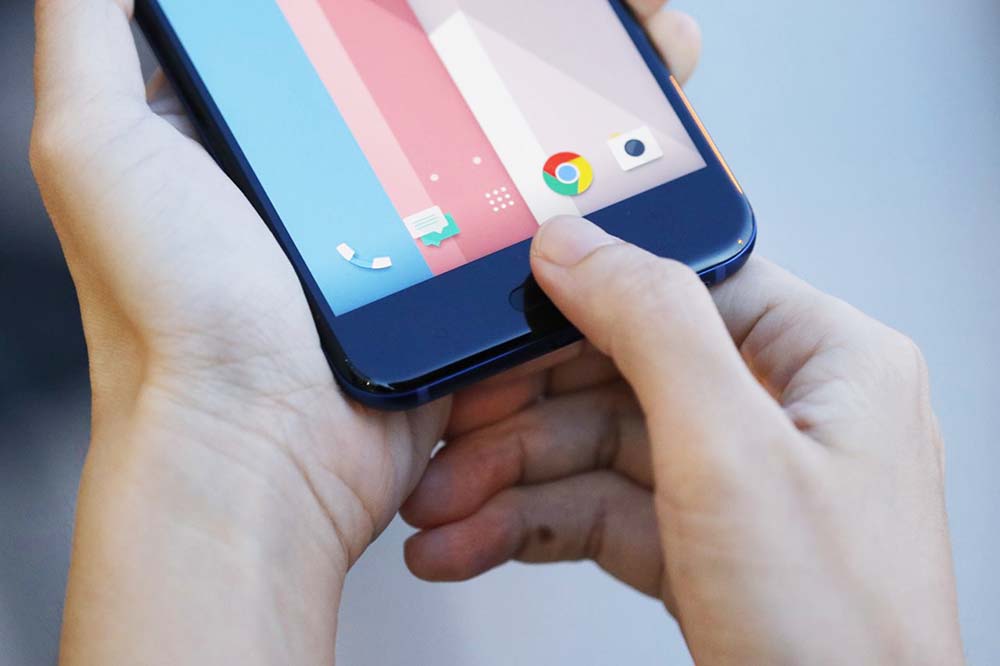
The HTC U11’s fingerprint sensor is fast and accurate.
As difficult as it may be to operate with either hand, the HTC U11’s display itself is a joy to look at. Tack-sharp, with splendid color reproduction and nice viewing angles. Ideal for multimedia consumption, as pictures and videos are presented with great fidelity and detail. It can get bright enough to the point your eyes might start to get uncomfortable, though this helps when using the unit outdoors in direct sunlight.
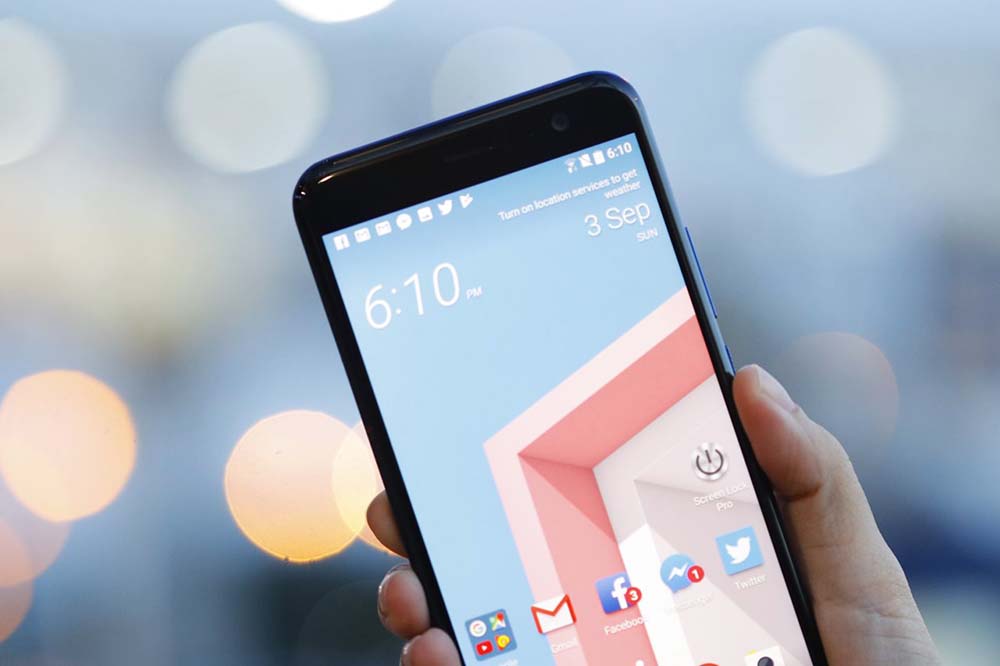
The HTC U11’s screen can get bright enough to the point your eyes might start to get uncomfortable, though this helps when using the unit outdoors in direct sunlight.
In short: If you’re expecting to find one of the best displays on the market today, you won’t be disappointed. Of course, pretty much every OEM these days has a flagship with a generous screen that’s hard to look away from.
Around the back is where the party is at. Flip the phone around (so that the primary camera faces you), and you’ll find a shiny, glossy glass back that merges seamlessly with the metal around the sides.
The glass is fused with layers of highly reflective minerals to make it look the way it does and make it seem like it is changing color. The process is what gives the Brilliant Black U11 a greenish tint at certain angles, while the Amazing Silver version takes on hues of pink and gray. Our Sapphire Blue unit looks purple sometimes, sometimes periwinkle and other times, of course, blue.
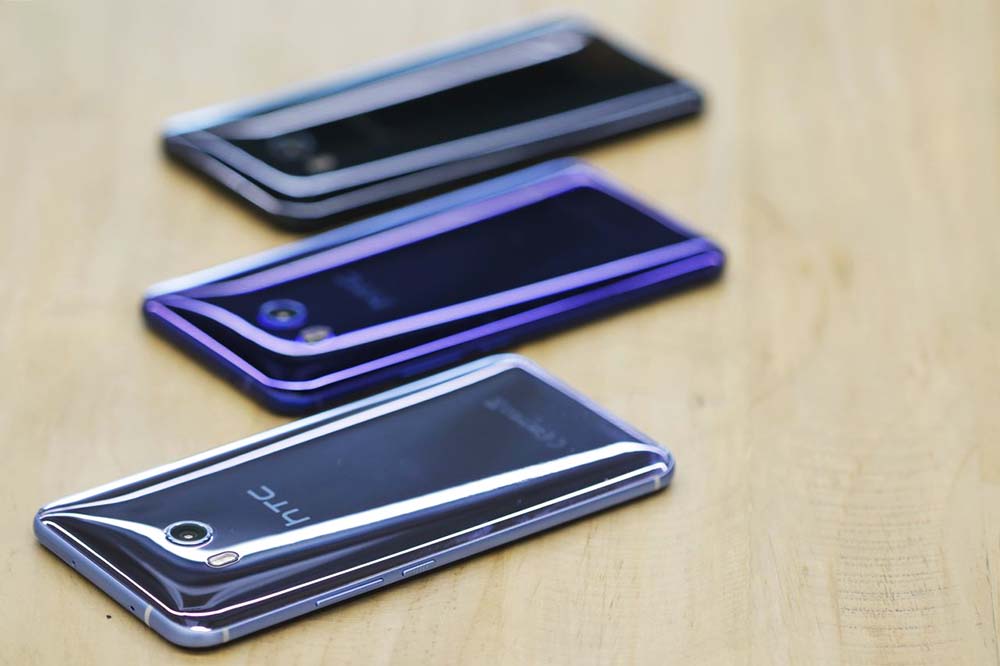
The HTC U11’s glossy glass back is fused with layers of highly reflective minerals to make it look the way it does and make it seem like it is changing color.
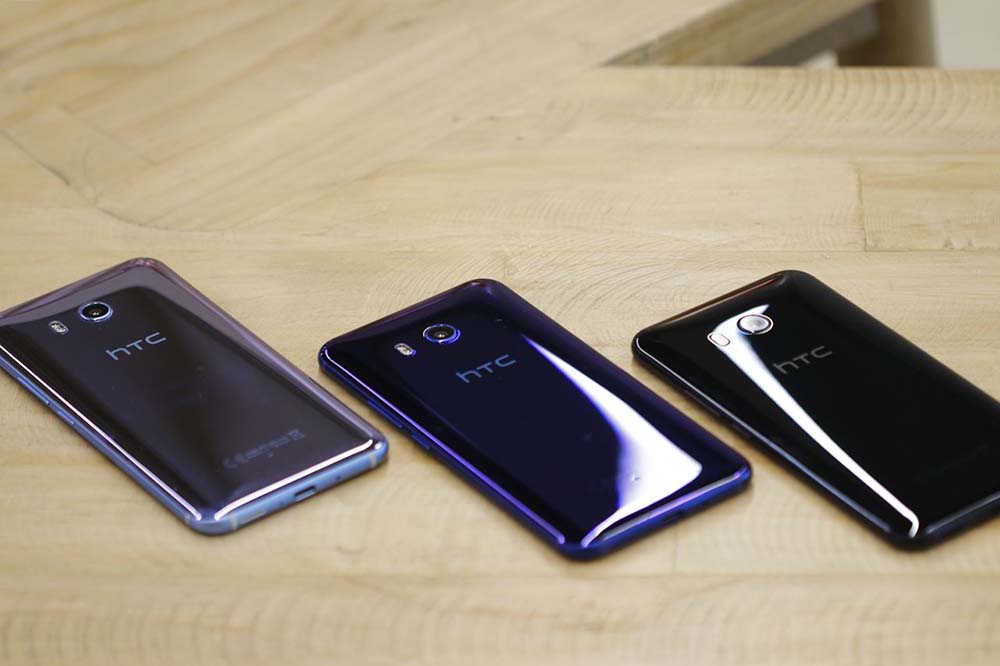
Another look at the HTC U11’s ‘liquid glass’ back.
We’re told HTC took pains to design and create the U11, and the resulting hardware simply draws you in. We’d go on, but you won’t get the full effect of HTC’s “liquid glass” back until you see a unit in person.
The downside to it should be obvious, as it gets spoiled as soon as it comes in contact with your hand or just about any hard surface. That glass scuffs up quite easily. On the upside, HTC includes a basic snap-on case in the box and throws in a cleaning cloth for good measure.
Also unique to the phone is that its left- and right-hand sides are both pressure-sensitive and provide haptic (read: vibration) feedback when the HTC U11 is squeezed. No, not a typo — HTC actually wants you to apply pressure to the edges to perform a specific task. Whether it’s to fire up the camera, to turn the flashlight on, or to whisk you straight into a particular app, it’s up to you.
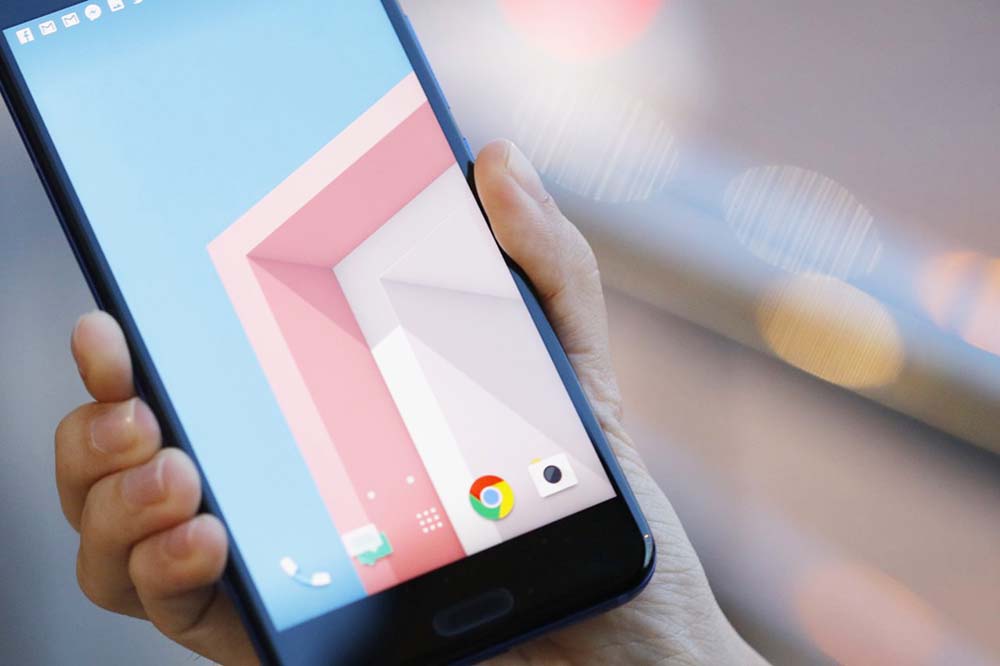
Unique to the HTC U11: Its left- and right-hand sides are both pressure-sensitive and provide haptic feedback when squeezed. No, not a typo — HTC actually wants you to apply pressure to the edges to perform a specific task.
And by that we mean the feature can be programmed to replicate just about any command. The same action, for example, can launch Facebook or snap a quick screenshot. You can even tweak the side panels for sensitivity and configure the functions triggered by short and long squeezes.
More importantly, you’ll be able to squeeze the device with wet fingers or while wearing gloves. It may take some getting used to, but we imagine owners will appreciate it over time. We also found the metal frame remained solid upon use.
It’s also worth mentioning that the HTC U11 is fully water- and dust-resistant to IP67 standard. You can use it in the rain, and it won’t mind one bit being washed off in the sink with water. As always, we don’t suggest submerging one of these unless by accident.
Predictably, this phone is about as fast and as capable as it gets in the mobile world. Given the premium pricing, there’s no reason why HTC couldn’t scoop up the best bits to cram into the hardware — and it didn’t, as the U11 comes with a Qualcomm Snapdragon 835 chipset and up to 6GB of RAM.
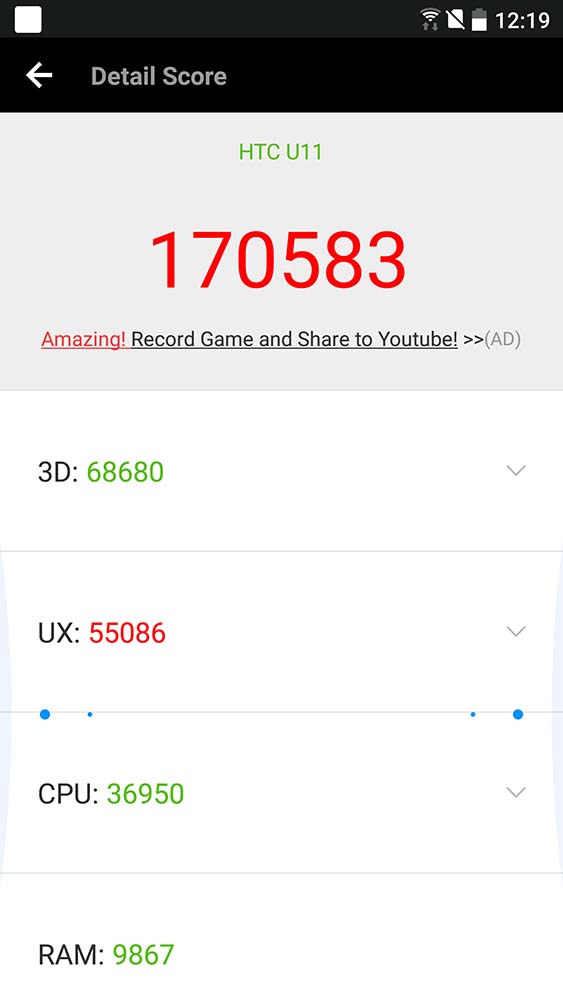
The HTC U11’s Antutu benchmark score
If this were a car, it would be a Bugatti. It flies through most tasks effortlessly, even running the poorly optimized NBA 2K17 Android port at maximum detail without hesitation. Bouncing between apps is instantaneous.
READ ALSO: How NBA 2K17 for Android is different from the iOS version
For the vast majority of people (us included), the 128GB of onboard storage is more than enough, and there’s the option to add more using a microSD card of up to 2TB if you’re an absolute media geek. A quick but important aside: The version sold in the Philippines has 6GB of RAM and 128GB of storage space, the best money can buy.
The 3000mAh cell, while not the highest capacity you can get in a flagship, can hold its own in practice. Even with usage that involved streaming full-resolution content on YouTube, playing 3D games, and browsing the web using cellular data, it lasted us an entire day. You can fast-charge the battery via USB Type-C and go from zero to 100 in under two hours.
The 3000mAh cell can hold its own in practice. Even with usage that involves streaming full-resolution content on YouTube, playing 3D games, and browsing the web using cellular data, the HTC U11 always lasts us an entire day.
We’re most enthused with the U11’s lone, back-facing camera — 12 megapixels, with f/1.7 lens and dual-pixel auto-focus. Amid the increasing popularity of dual-lens systems, it’s refreshing and remarkable at the same time that the U11 is able to consistently outperform its rivals and dish out detailed photos that have pleasing and honest colors and great exposure.
Resized sample photos taken with the HTC U11
The videos recorded in the camera look fine, stabilized along 3 axes, and the resolution goes all the way up to 4K, with 60 fps recording coming in the next couple of months. For musicians and concert-goers, there’s the option to capture 3D sound with the help of a four-microphone array. (Watch for our video showing Launchpad, Voyager Innovation’s new headquarters. Everything was taken with the U11. — Editor’s Note)
Having used it for a little more than a month, we agree with the imaging analysts at DxOMark who gave the U11 the highest rating ever for a smartphone camera: More times than not, it simply trumps all when it comes to taking photos and videos, which come out looking better than they will on other leading units.
Having used the HTC U11 for more than a month, we agree with the imaging analysts at DxOMark who gave the U11 the highest rating ever for a smartphone camera.
It won’t win every comparison convincingly. But then again, maybe it doesn’t need to. Use it enough times, and you’ll probably reach a similar conclusion. The camera also performs well without hesitation, so you don’t really need steady hands to get a clean shot, except perhaps in low light.
Meanwhile, the front camera is sharp and gives excellent results in most situations, being able to pull in more light due to its larger aperture, which makes for some bright selfies.
Final thoughts
The U11 is simply the best to don the HTC branding, and it’s quite possibly the finest in the business. It isn’t the cheapest flagship around, but it does a remarkable job of making you feel like you’re getting your money’s worth.
We wouldn’t award it as many brownie points for manageability concerns as we would Samsung and LG’s current flagships. But if you’re after a top-shelf option that performs above and beyond its nearest rivals, minus the extra bells and whistles, all except for one — look no further. If nothing else, consider it for its camera hardware.
Welcome back, HTC. All is forgiven.
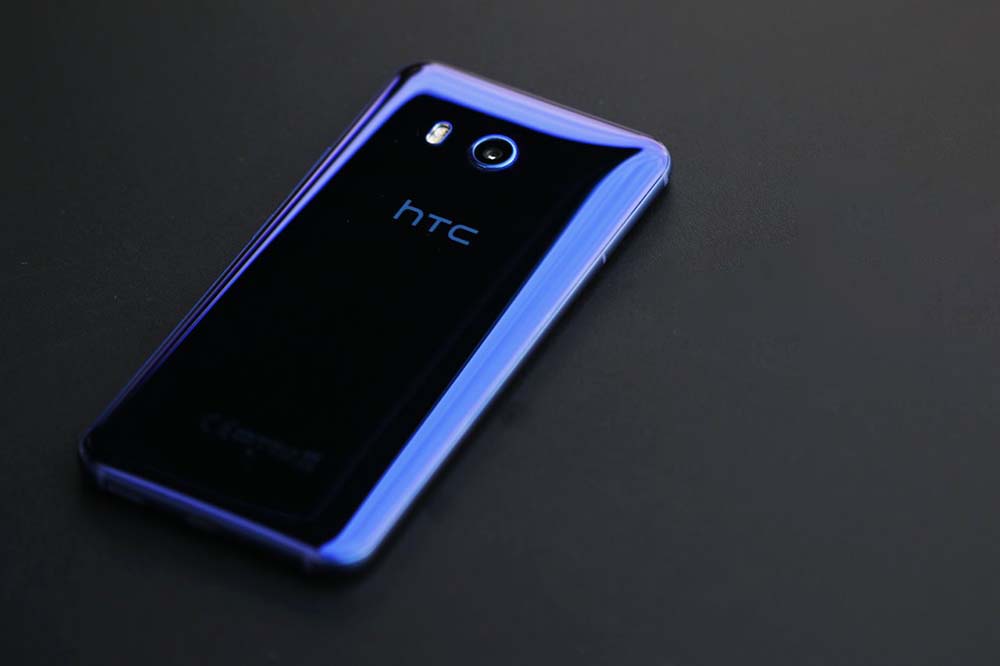
The U11 is simply the best to don the HTC branding.
Share this Post


